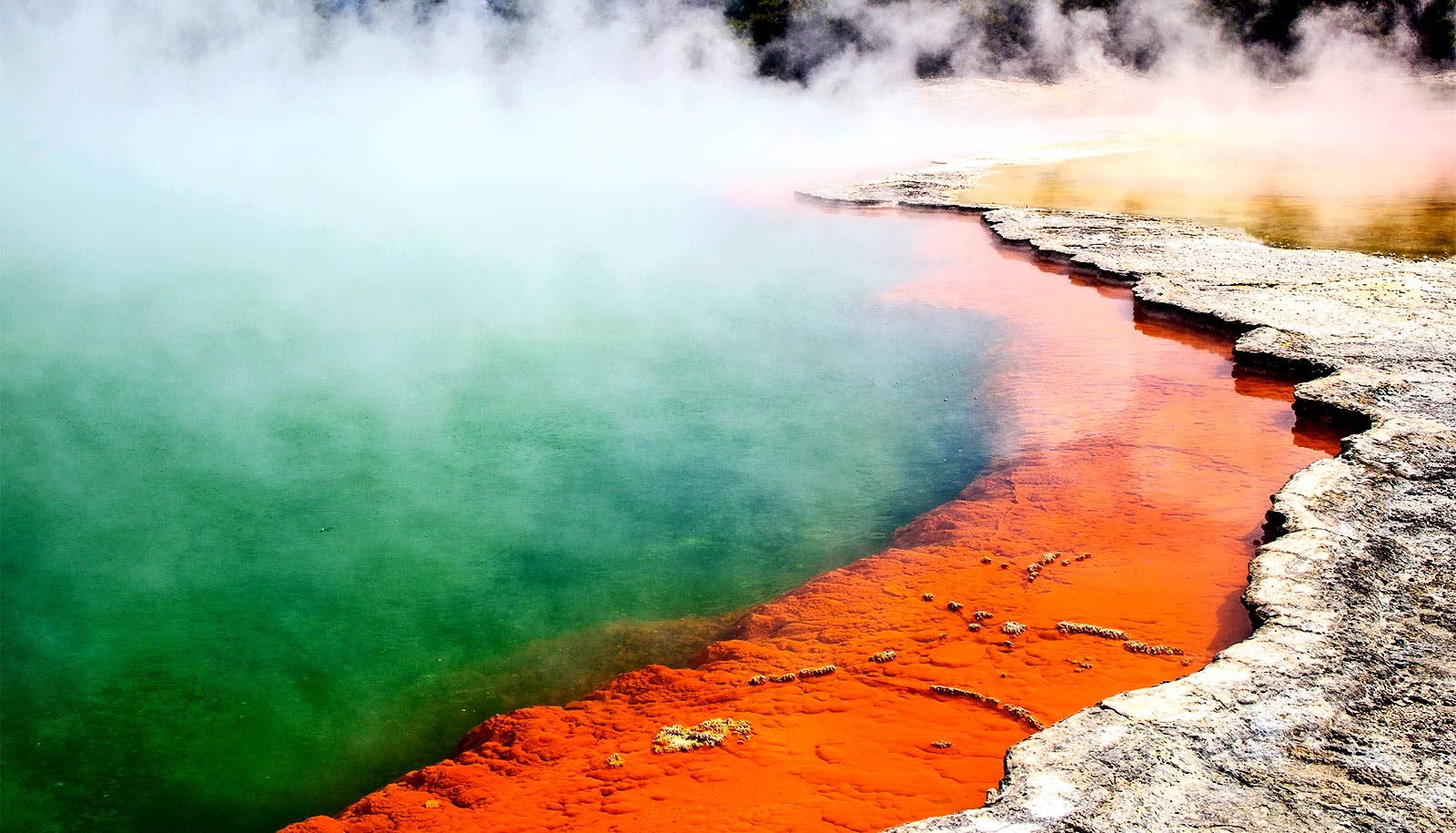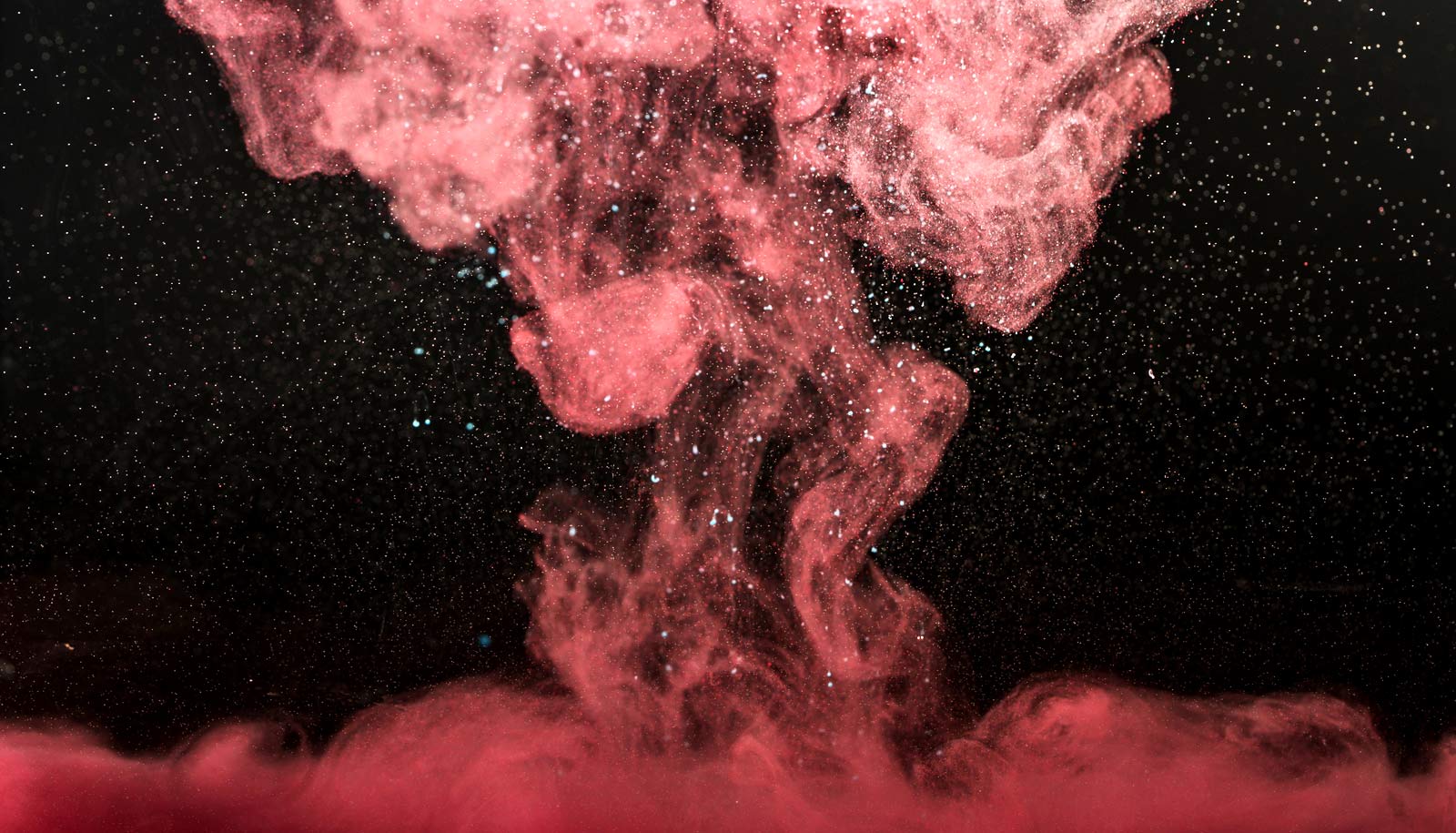Early humans may have used hot springs as a cooking resource, for instance to boil fresh kills, long before humans are thought to have used fire as a controlled source for cooking, according to a new study.
Some of the oldest remains of early human ancestors have been unearthed in Olduvai Gorge, a rift valley setting in northern Tanzania where anthropologists have discovered fossils of hominids that existed 1.8 million years ago. The region has preserved many fossils and stone tools, indicating that early humans settled and hunted there.
In their new work, researchers discovered evidence that hot springs may have existed in Olduvai Gorge around that time, near early human archaeological sites
“As far as we can tell, this is the first time researchers have put forth concrete evidence for the possibility that people were using hydrothermal environments as a resource, where animals would’ve been gathering, and where the potential to cook was available,” says Ainara Sistiaga, a fellow based at Massachusetts Institute and the University of Copenhagen and lead author of the paper in the Proceedings of the National Academy of Sciences.

In 2016, Sistiaga joined an archaeological expedition to Olduvai Gorge, where researchers with the Olduvai Paleoanthropology and Paleoecology Project were collecting sediments from a 3-kilometer-long (1.86 miles) layer of exposed rock deposited around 1.7 million years ago. This geologic layer was striking because its sandy composition was markedly different from the dark clay layer just below, which was deposited 1.8 million years ago.
“Something was changing in the environment, so we wanted to understand what happened and how that impacted humans,” says Sistiaga, who had originally planned to analyze the sediments to see how the landscape changed in response to climate and how these changes may have affected the way early humans lived in the region.
It’s possible that hominins may have used nearby hot springs to cook food such as meat and certain tough tubers and roots.
Sistiaga brought back sandy rocks collected from the Olduvai Gorge layer and began to analyze them for signs of certain lipids that can contain residue of leaf waxes, offering clues to the kind of vegetation present at the time.
The sediments revealed lipids that looked completely different from the expected plant-derived lipids. Roger Summons, professor of geobiology at MIT, realized that they were a close match with lipids produced not by plants, but by specific groups of bacteria that he and his colleagues had reported on in a completely different context, nearly 20 years ago.
One specific bacterium was particularly interesting. Thermocrinis ruber is a hyperthermophilic organism that will only thrive in very hot waters, such as those found in the outflow channels of boiling hot springs.
“They won’t even grow unless the temperature is above 80 degrees Celsius. Some of the samples brought back from this sandy layer in Olduvai Gorge had these same assemblages of bacterial lipids that we think are unambiguously indicative of high-temperature water,” Summons says.
From that, the researchers conclude that this heat-loving bacterium appears to have lived in Olduvai Gorge 1.7 million years ago. By extension, the team proposes, high-temperature features such as hot springs and hydrothermal waters could also have been present.
“It’s not a crazy idea that, with all this tectonic activity in the middle of the rift system, there could have been extrusion of hydrothermal fluids,” Sistiaga says.
“Olduvai Gorge is a geologically active tectonic region that has upheaved volcanoes over millions of years—activity that could also have boiled up groundwater to form hot springs at the surface.”
The region where the team collected the sediments is adjacent to sites of early human habitation featuring stone tools, along with animal bones. It is possible, then, that nearby hot springs may have enabled hominins to cook food such as meat and certain tough tubers and roots.
While there is currently no sure-fire way to establish whether early humans indeed used hot springs to cook, the team plans to look for similar lipids, and signs of hydrothermal reservoirs, in other layers and locations throughout Olduvai Gorge, as well as near other sites in the world where human settlements have been found.
“We can prove in other sites that maybe hot springs were present, but we would still lack evidence of how humans interacted with them. That’s a question of behavior, and understanding the behavior of extinct species almost 2 million years ago is very difficult,” says Sistiaga.
“I hope we can find other evidence that supports at least the presence of this resource in other important sites for human evolution.”
Source: University of Copenhagen


